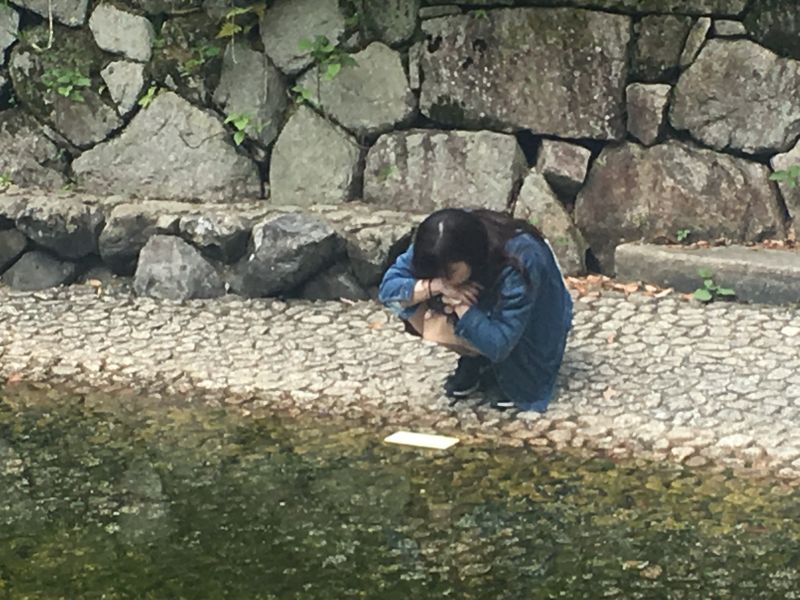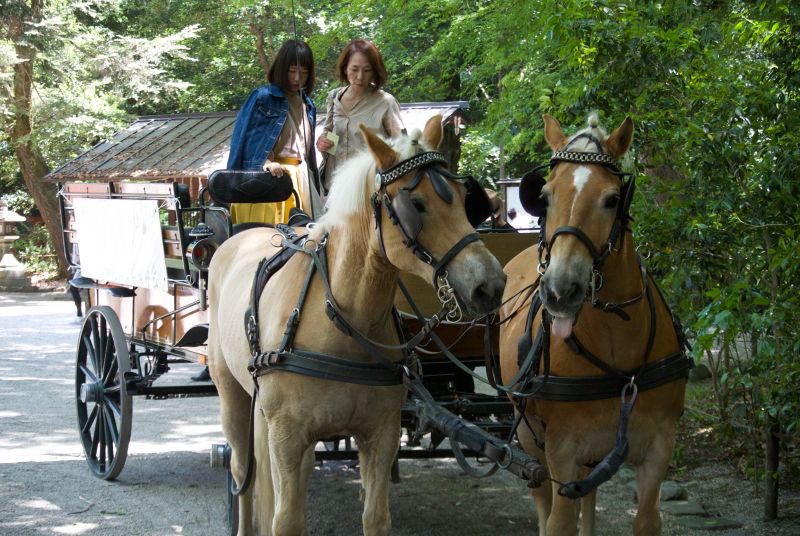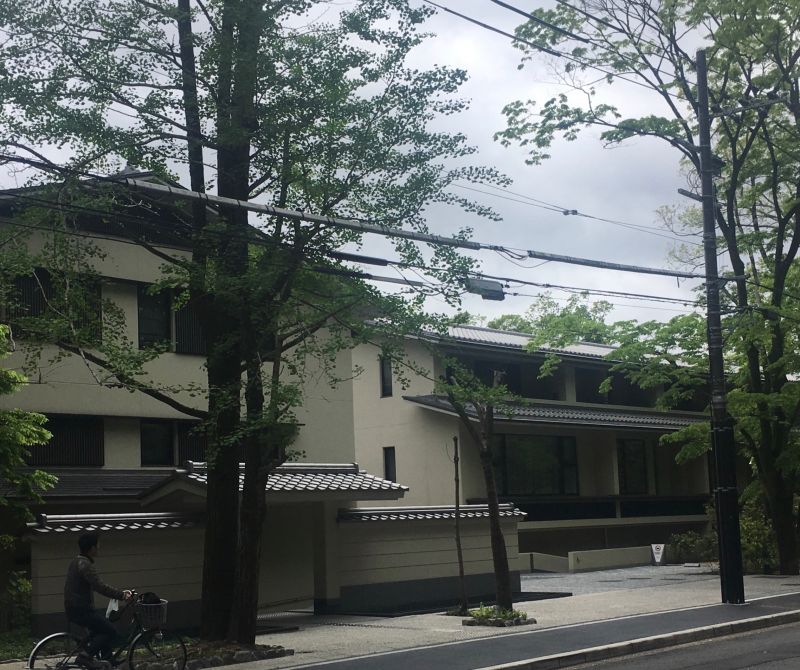Green Shinto has hosted several postings about my local shrine, the World Heritage site of Shimogamo Jinja. The wooded surrounds, crystal-clear streams and sense of history make visits a constant delight. As someone interested in Shinto affairs, I’m always alert to the many changes made to this bastion of tradition each year. Many of the innovations and modifications are done in the name of authenticity, but some are simply deliberate attempts to increase revenue. On a Golden Week visit a couple of days ago, I took my iPhone with me and photographed some of the recent changes.

The biggest surprise was to find a brand new subshrine on the main approach to the shrine. Simple, pristine and pure with its white gravel flooring, it is dedicated to the 35 ‘saio’ or vestal virgins who served at the shrine from the ninth to the twelfth centuries. (The shrine apparently existed prior to WW2 and has been restored in the present round of rebuilding. Its official name is the rather wordy, KamoSai’in Reidai no Itsuki no Miya no Mitama no Yashiro.)

Nearby is another new subshrine, the Sawata-sha, originally a deity protecting the imperial palace. The shrine building was moved to Shimogamo after the Onin War devastation, then, remarkably, in 1910 ‘the deity communed through the vehicle of “the ball”, and the first attempt at a rugby match took place on the horse grounds in front of the shrine… Thus the world of Japanese rugby began its history.’ Can it be just coincidence that Japan is looking to host the rugby World Cup next year?!

Previously I always thought of water and fortune slips as being associated with Kibune Jinja, but Shimogamo has now introduced the attraction. Soak your paper in the stream, and the water deity will reveal your fortune.

Like other shrines, Shimogamo is happy to cash in on popular manga and anime which use the shrines as fantasy sites influenced by the ‘power spot’ and Harry Potter boom. In this case the popular Eccentric Family (Uchouten Kazoku) set in the shrine.

A few years ago you never saw English at shrines. Now instructions about how to worship and ;unify oneself beforehand are almost ubiquitous in the face of the tourist tsunami that has swept across the country.

At both the main shrine, and here at the Kawai sub shrine, doors previously kept closed have been thrown open to reveal the honden sanctuaries into which the kami alight. Purified pebbles provide an intermediate space between this world and the other.

One new attraction is a cart and pair of matching horses to trot round the sacred grounds. At least it draws on the tradition of horses as intermediaries with the kami, though it’s unlikely these ones will gallop off and take flight in the manner of winged Pegasus…

In the woods a 12th century outdoor altar has been excavated, giving a true sense of nature worship

Sadly the visit ends with the shrine’s principal means of revenue for the moment – a block of recently constructed flats that necessitated the cutting down of ancient trees and which will be rented out for the next thirty years before – supposedly – the woodland will be restored.

Leave a Reply